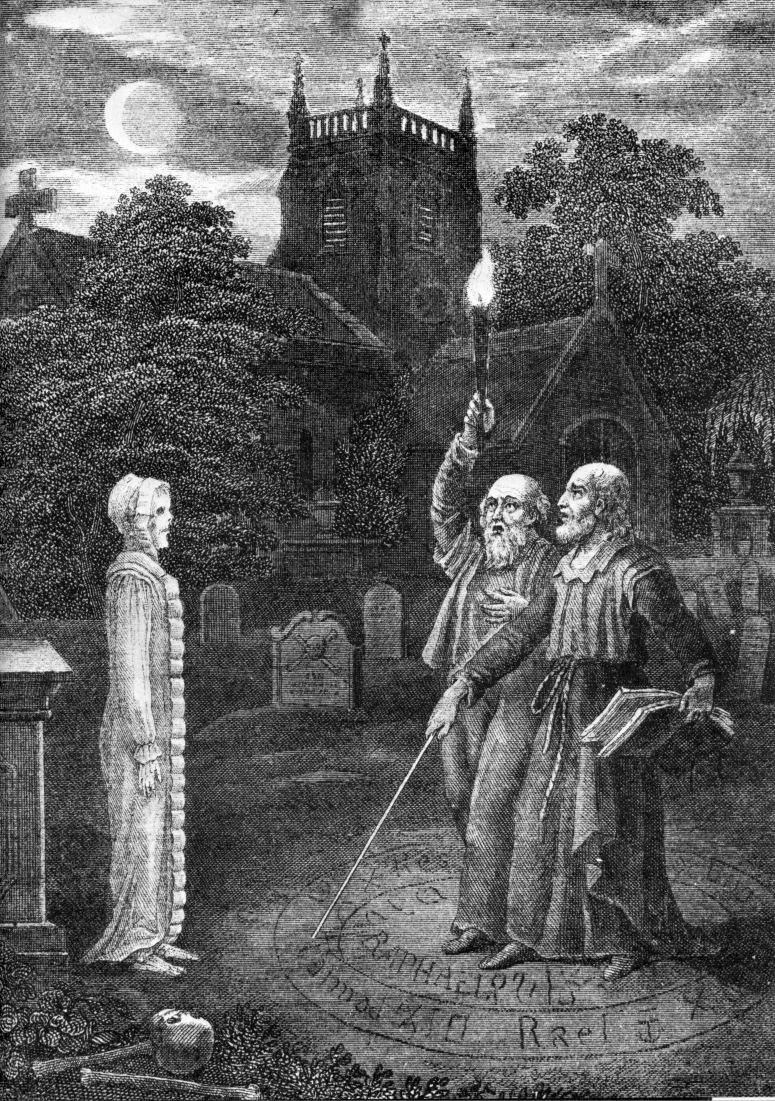Necromancy is a form of magic in which the dead are in some sense re-animated and able to communicate with the sorcerer who invoked them, just as they would if they were alive; belief in this practice has been common to many human cultures across the centuries. The word derives from the Greek necros, meaning “dead” or “departed” and manteia, which means variously “foretelling”, “to summon forth” and “divination”.[1] It is not generally considered to include the kind of spirit communication employed by Spiritualistic mediums.[2]
The usual reason for calling up the spirits of the dead was for divination, as it was believed that being no longer limited to the earthly plane spirits had access to knowledge of the future that the living could not.[2] One of the earliest such accounts of necromancy appears in the Old Testament (1 Samuel 28:3–25), in which Saul, the first King of Israel, implores the Witch of EndorFemale sorcerer who appears in the Old Testament (1 Samuel 28:3–25). to summon the spirit of the prophet Samuel, so that he may know the outcome of an imminent battle. But spirits could also be summoned to help achieve some goal such as great wealth, as in the Scottish Celtic magic known as taghairmScottish Celtic practice similar to necromancy, in which spirits or demons are conjured up to help achieve some end, or to foretell the future. .
During the 14th century the Church’s fear of necromancy – and other forms of magic – was verging on “obsession”, especially at the court of Pope John XXII, who in 1318 commissioned an investigation into the alleged use of books of necromancy among some clergy and lay persons. The following year Bernard Délicieux was accused of using necromancy against the Pope, and although found not guilty was nevertheless imprisoned for his possession of a book on the subject; the Church at the time feared that a rise in literacy and the increasing availability of books would lead to a corresponding diffusion of heretical beliefs.[3]
The theological difficulty with the notion of necromancy lay in the fact that most major religions held that only God or Allah can breathe life into the dead; other Old Testament verses seem to suggest that the term soul is to be understood as a “life force”, not an entity capable of independent existence.[1] There was therefore some considerable debate during the early modern period about what it was that was conjured up by the Witch of Endor and other necromancers. Was it really the spirit of the dead or was it some kind of demonic illusion?[4] If after the body’s death souls went either to heaven or to hell, then how could they be summoned from either God or Satan? The clergyman Robert Wisdom, writing in 1543 about revenantsSpirit of a dead person returned to visit the living, the common conception of a ghost. , expressed the difficulty thus: “sowles departed do not come again and play boo peape with us”.[5]
The final word may be left to Leonardo da Vinci (1452–1519):[6]

